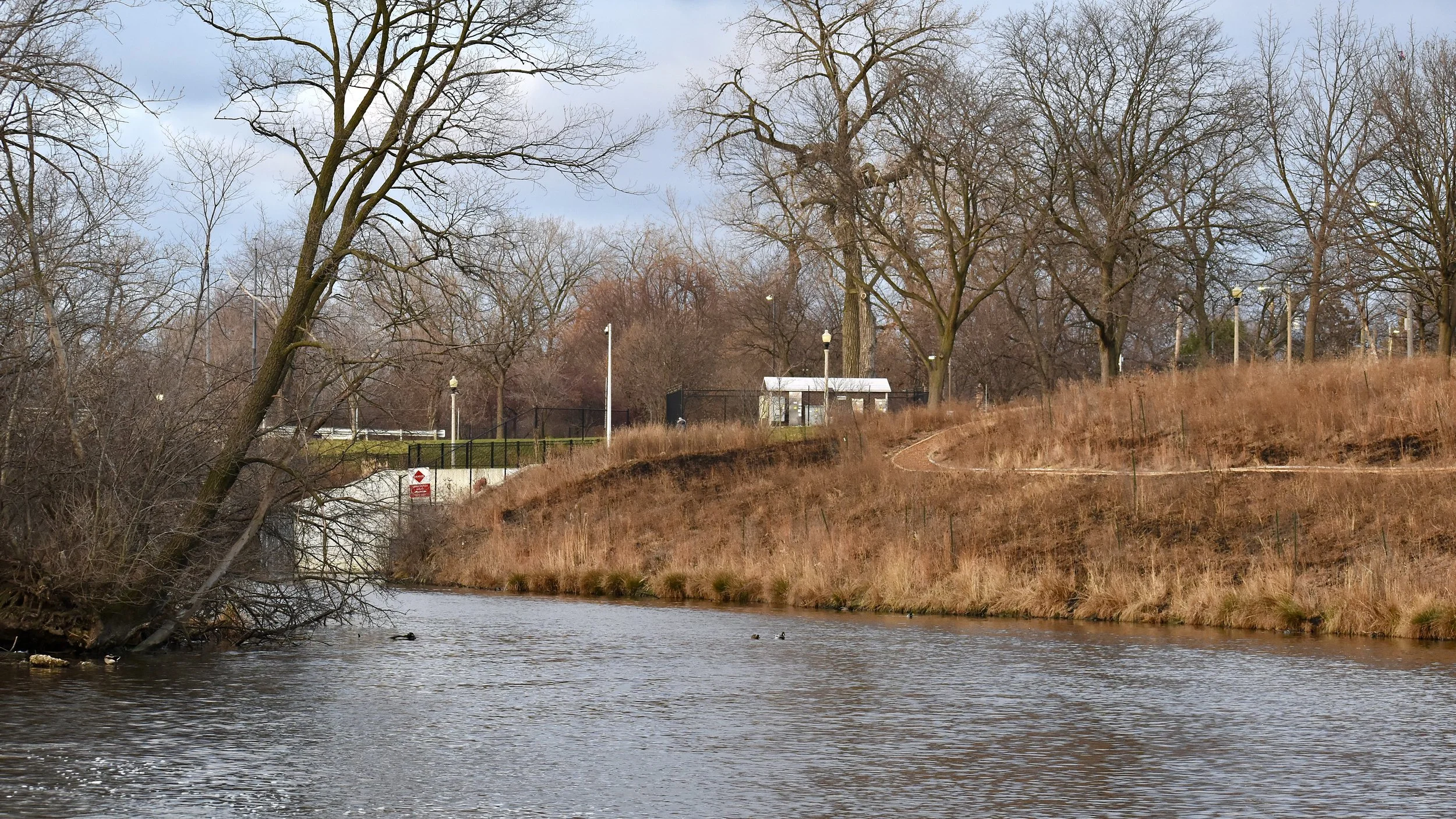River Park covers 30 acres at the confluence of the north branch of the Chicago River and the North Shore Channel and touches the Albany Park, Lincoln Square and North Park neighborhoods. Waterbird fans may be familiar with River Park due to the presence of great blue herons and a small group of endangered black-crowned night-herons. Yet unlike adjacent Ronan Park, where migratory bird sightings qualify that site as a birding hot spot, in River Park there are few migratory and songbird sightings due to a lack of suitable habitat.
A project of the Army Corps and Chicago Park District did a great job of removing invasive shrubs and replacing them with a beautiful prairie and savanna - but left little woody habitat for the migrating landbirds that relied on this park. In addition to disappointing local birders, this presents a threat to the tens of thousands of migrating birds that pass through the highly urban area twice yearly. In 2008, a report (Ewert, 2008) assigned the site top priority classification for developing migratory habitat amidst the dense urban area which surrounds the confluence.
A CAS committee is in its second year of planning a bird habitat installation at River Park. The committee has been working with the Chicago Park District to find some out-of-the-way places to add shrubs and understory trees. The National Park Service made some drawings.
. This project will extend the quality riparian ecosystem at Ronan Park farther north along the North Shore Channel. The first round of plantings, over $5000, was completed in fall of 2022. We are hoping to raise another $3000 in 2023. Shrubs are not very expensive, so any size donation will make a bird very happy.
Update 7/21/22: Block Club article about our efforts helps a lot -
View of planned habitat area from the river (banner); Black crowned night heron; View of walking path through the planned bird habitat at River Park (photos by Raed Mansour)
This year the group also collected data at River Park, Ronan Park and Park 538 in order to measure and share the impact of the plantings. It takes a lot of data to draw conclusions about migratory birds, since their presence depends as much on the weather as it does on the habitat, and the group collected an amazing 694 checklists! Congratulations to the amazing crew of habitat planners and bird monitors: Raed Mansour, Colleen McVeigh, Alan Anderson, Alex Rocklin, Alex Gnoske, Brighten Jelke, Melissa Foster, Judy Pollock, Jarrod Routh, Mark Kolasa, Sigrid Schmidt, Jill Niland, Laura McAlpine, Joanna Sjoblom, Frank Geilen, Rachel Kimpton, Lally Fabela and Claire Labuda.
CAS is turning people’s love for birds into habitat on the ground for our region’s birds of conservation concern.



